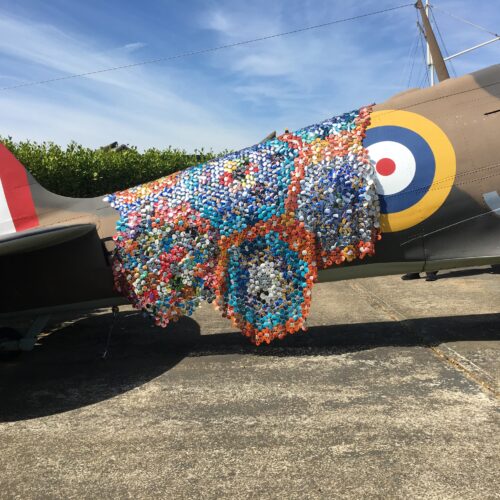
Exhibition review: Josef Frank
Posted: 28/03/17 09:59 | 1 Comments

Recently I went to the Fashion and Textiles Museum in Bermondsey in London.
The museum is currently showing some exciting textiles and watercolour Drawings of Austrian Architect and Designer Josef Frank, the exhibition is on until the 7 of May.
Josef Frank’s created a broad collection of fabric patterns whilst working as a partner with an Interior design firm in Vienna and also designs from this period in Stockholm and New York. He had ideas about living that challenged the orthodox functionalism at the time, he thought that the interiors of a home should feel cosy and comfortable and be adapted to the wishes of the inhabitants. With soft sofas, beautiful hardwoods and fabrics featuring amazing patterns and rich in colours, the home was made into a haven and a place for recuperation.
In his textile patterns Josef Frank created worlds that stood in stark contrast to the reality of the interwar period and the Second World War. Creating designs full of colourful birds, flowers, butterflies, berries… Some examples of this patterns are

Gröna Fåglariträd ( Green Birds in the tree). (1943-45), designed in New York for Svenskt Tenn. This pattern is covered in green birds of varying sizes and types. Some are wading through a meandering river, others are sitting, singing, eating or courting; in fact, they do practically everything that birds do other than flying. It all takes place around a leaning tree.


Another example of the same period is Rox and Fix, which Josef Frank designed in New York for Svenskt Tenn. He often drew little hills in landscapes, which help to create depth in the design. In this piece, the hills have been turned into high, bare mountains, clearly inspired by Chinese ink paintings in form and colour. Between the mountain peaks, he has drawn fig leaves that stretch out over the mountainsides as large trees.
The exhibition shows the designs together with its original watercolour paintings from which he developed the pattern repeat of his designs.

The exhibition shows the designs together with its original watercolour paintings from which he developed the pattern repeat of his designs.

The designer William Morris and the English Arts and Crafts movement provided a rich source of inspiration for Josef Frank. The fabric “Mirakel” (Miracle), which was created in the 1920s, references patterns designed by Morris. In shape and colour, Frank’s fabric is clearly modern: flowers and leaves have been drawn more freely that in Morris’s designs and the colours are almost luminescent due to Frank’s choice of contrasting colours, such as blue against orange and red against green on a black background.


The second floor of the Museum shows an extensive collection of watercolour paintings that he painted in the 1950s. The subjects of this paintings were realistic, such as landscapes, cityscapes and still lifes. Since he had used water colour for his textile designs, the technique was well known to him. The works represent a private side of Josef Frank the artist.


Posted by author: Pere Bruach






I was recently in London and saw this exhibition. It was my first visit to the fashion and textiles museum and I really loved it. I thought it was a rich exhibition and enhanced by being able to touch the textiles. I feel there’s something of the actual surface of textiles that is so wonderful in real life though good images are enjoyable in themselves. I think it’s seeing the warp and weft close up. Thanks for the full article about this show.